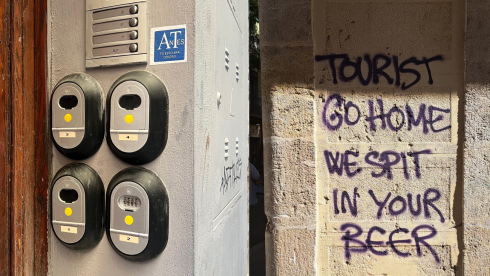By John Keogh
THE Axarquia has been a remote and inhospitable place for centuries.
Home to bandits, guerrillas and revolutionaries, it is only now beginning to be explored by Spanish and foreigners alike.
These hills will turn you around and upside down. Without proper maps and a compass you can get in serious trouble.
This is exactly what happened to Dutch walker Mary Ann Goossens, who was lost for 18 days in the hills, just 10kms from Nerja, earlier this year.
I run into walkers with a guide book in one hand and a look of bewilderment on their faces
Getting confused she found herself lost on a precipice up in the celebrated Chillar Canyon and was only able to survive her ordeal as she was near to water.
It is certainly worth pointing out the hazards of walking alone or unprepared in the hills and mountains.
As a local guide, I have often run into walkers with a guide book in one hand and a look of utter bewilderment on their faces as they try to decipher what a writer was trying to describe.
While excellent tools, one basic tenet is often overlooked; they are no substitute for thinking for yourself, working out the route by using contours, measures, timing based on terrain and all the other things that go to making for a successful self-guided walk.
When I began to take my hill walking seriously about 14 years ago, one of the first things I did was take a course on map-reading and the use of a compass.
Mary Ann got lucky. Without water close by, she would be dead. Her rescue was one of the true ‘good news’ stories of the year, but it also highlighted what can happen in what most people regard as a ‘safe’ hiking area.
Contact John Keogh at www.HikingWalkingSpain.com
CHILLAR FACTS
The Rio Chillar is one of the most popular walks in the Axarquia.
Indeed, during the height of summer it can be so full of walkers that it resembles Calle Larios in Malaga.
But out of season (principally between May and October) it is a delight, with the majority of people walking up for about an hour or two to various rock pools and waterfalls to swim in.
I have walked it many times with groups, coming from Frigiliana along the Ruta del Iman towards Maro.
This part of the walk takes about two to three hours and is very well signposted and way-marked.
At the Rio Chillar, the path continues on towards the Caves of Nerja near Maro, but we follow the course of the river downstream for a further three hours until we reach Nerja.
There is no path beside the river. Walkers must walk in the river, through the water, negotiating various falls and pools as we go.
It’s great fun but still a long and tiring walk coming in at approximately 15 kms and taking up to six hours including breaks.
During the winter and spring the Chillar becomes a raging torrent which is too dangerous.
We can still cross it on our way to the Caves of Nerja but we cannot walk down to Nerja during this time.






